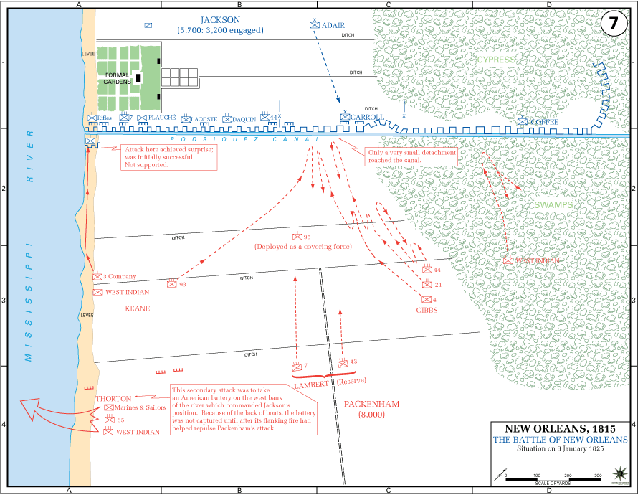The road to the Battle of New Orleans for the Choctaws began with the Redstick Creek attack on Fort Mims on August 30, 1813.
Traditionally, Choctaw boys became men when they engaged in successful warfare and the Redstick rebellion provided an opportunity to acquire manhood status in this conventional manner.

The United States Military Academy at West Point
As Americans living in the Mississippi Territory wondered whether Choctaws might join the Redstick rebellion, the three primary Choctaw chiefs -- Pushmatha, Mushulatubbee, and Apuckshunubbee, -- acted quickly to keep Choctaws neutral in the conflict or to join the American side as soldiers. They failed to keep all Choctaws on the American side, however, as a sizable number of Choctaw Redstick supporters fled to the swampy grounds of the lower Alabama River region. With the urging of American officials, such as George S. Gaines, factor of the Choctaw Trading House at St. Stephens, and John McKee, U.S. agent to the Chickasaws, along with European traders intermarried with the Choctaws such as John Pitchlynn and Pierre Juzan, Pushmataha led a great council attended by thousands of Choctaws at the home village of Apuckshunubbee in September 1813. Out of that council, Choctaws formed companies of soldiers that engaged in fighting against the Redstick Creeks throughout the Creek War in 1813 and 1814. Gaines reported that one of the reasons that Choctaw men eagerly joined the war effort against the Creeks was that they had become "excited" by the Redstick rebellion and "were desirous to be engaged in war." Traditionally, Choctaw boys became men when they engaged in successful warfare and the Redstick rebellion provided an opportunity to acquire manhood status in this conventional manner. For this reason, and because the United States recognized Choctaw recruits as soldiers in the U.S. Army, Choctaw men eagerly joined the war.
Traders like Pierre Juzan seized the chance to protect their economic interests and ensure that they openly supported the winning side by raising Indian forces to fight. Juzan lived in the Choctaw village of Coosha with his Choctaw wife who was reportedly a niece of Pushmataha. He worked with Pushmataha to organize Choctaw fighting forces. When the bulk of Choctaw fighting men joined Major Uriah Blue's command that captured Pensacola in November 1814, Juzan led a smaller force of about 30-60 Choctaws to New Orleans with Andrew Jackson's command. Once in New Orleans, Juzan and this smaller unit of Choctaw soldiers patrolled the Chef Mentour Road along the Gentilly Plain to prevent British incursions via Lake Borgne after the British captured the lake on December 14. When the British captured the Villeré Plantation on the east bank of the Mississippi a few miles below New Orleans on the morning of December 23, a group of 18 Choctaws along with Juzan joined Jackson's counter-attack that evening. As the British and American armies lined up a few hundred yards apart and fortified their positions over the next several days, the Choctaws with Juzan deployed to the extreme left flank of the American lines and sniped at the British pickets from under cover of the cypress swamps. Purportedly they killed upwards of 50 British soldiers in the days leading up to and including the culminating battle on January 8, 1815.
Last updated: February 3, 2015
